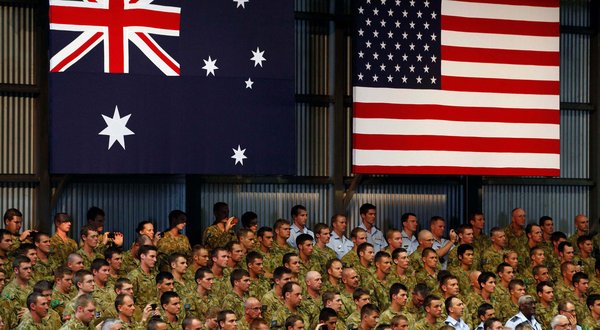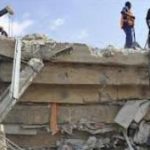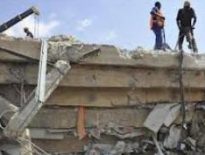WASHINGTON — In November 2011, President Obama stood before the Australian Parliament and issued a veiled challenge toChina’s ambitions in Asia: “As a Pacific nation, the United States will play a larger and long-term role in shaping this region and its future.” A year later, the details of his pledge — along with a nascent American military buildup in the Pacific — are emerging.

This summer, about 250 United StatesMarines, the first of 2,500 to be deployed to Australia, trained with the Australian Army near the port city of Darwin and with other militaries in Thailand, Malaysia and Indonesia. Next spring, the first of four Americanlittoral combat ships, fast new vessels meant to keep a watch on the Chinese Navy, is to begin a 10-month deployment in Singapore.
The United States is strengthening its alliances and expanding its military exercises in the region. In an amphibious warfare drill on Guam in September, which did not go unnoticed in Beijing, Japan’s Self-Defense Forces and American Marines “retook” a remote island from an unnamed enemy.
But as Defense Secretary Leon E. Panetta heads off this weekend for his fourth trip to Asia in 17 months, criticism is intensifying among defense policy experts in Washington that the administration’s “pivot” to the Pacific remains mostly verbal — a modest expansion and repackaging of policies begun in previous administrations, although still enough to unnecessarily antagonize the Chinese.
Pentagon officials counter that they are managing tensions with China while devoting crucial new resources and attention to a region that has been central to American defense policy since World War II.
“Our policy is not to contain China,” said George E. Little, the Pentagon press secretary. “It’s to continue to strengthen our defense relationships with our allies and partners in the Asia-Pacific.”
Pentagon officials acknowledge that they are in the early stages of the policy and that much of the hardware — the new ships, F-35 Joint Strike Fighter jets and P-8 Poseidon maritime reconnaissance planes, to name a few — will not arrive in the region for years. They also say that if Congress does not agree to a fiscal deal this fall, the Pentagon will not be able to pay for much of the Asia strategy.
For now, the Pentagon is shifting weapons like the B-1 and B-52 long-range bombers and Global Hawk drones to the Pacific from the Middle East and Southwest Asia as the war in Afghanistan winds down.
China, which has spent the past year asserting territorial claims to disputed islands that would give it vast control over oil and gas rights in the East and South China Seas, remains suspicious about American intentions.
“We hope the U.S. can respect the interests and concerns of other parties in the region, including China,” a spokesman for the Chinese Embassy in Washington, Gao Yuan, said last week in a written statement, responding to a question on the eve of Mr. Panetta’s trip to Asia about China’s reaction to the pivot.
Mr. Panetta, who will travel to Australia, Thailand and Cambodia ahead of a trip to the region by Mr. Obama later this month, will promote what the Pentagon prefers to a call a rebalancing in the region, with these main elements:
¶Troop increases: The United States has 320,000 troops in the Pacific region, and the Pentagon has promised there will be no reductions as troops are drawn down in Afghanistan and other parts of the world. The already large military presence is one reason there has been skepticism that an additional 2,500 Marines in Australia, a move Mr. Obama announced last fall, amounts to more than show. It did, however, provoke a sharp response from Beijing.
“The Marine issue is really a blip in the larger pivot to Asia,” said David J. Berteau of the Center for Strategic and International Studies and a co-author of a report last summer that criticized the Pentagon for not sufficiently explaining how it would carry out and pay for the pivot. “If you have a fly on your glasses it looks really big and you can’t see past the fly. But it’s still just a fly.”
Pentagon officials nonetheless say that the Marines are an important symbol of America’s long-term commitment to the Pacific. Under an agreement with Australia, the Pentagon anticipates that the company of 250 Marines that arrived in Darwin in April for a six-month rotation will grow to a battalion of 1,000 Marines in 2013. By 2016, assuming more housing is built, the Marines are expected to number 2,500.
¶More military exercises: Unlike building new ships and fighter jets, having joint training with other countries in Asia is relatively inexpensive and can be done fairly quickly. The United States has not only increased the number of exercises but also opened them up to more countries: a powerful message to China that America is working to improve the capabilities of the militaries in its strategic backyard.
This summer, India and Russia participated for the first time in Hawaii in the world’s largest international maritime exercise, Rim of the Pacific, but the United States excluded China, drawing a protest from Beijing. China is invited to the next Rim of the Pacific, in 2014.
In another acknowledgment of Chinese sensitivities, the Japanese government canceled a joint amphibious landing on a remote island near Okinawa that was to have been part of an enormous annual exercise of the American and Japanese militaries last week. The cancellation was an effort not to provoke China, which is locked in a dispute with Japan over the control of uninhabited islands near Okinawa in the East China Sea.
More ships: Mr. Panetta has said that by 2020, the United States will have 60 percent of its ships in the Pacific and 40 percent in the Atlantic, compared with the current 50-50 split. The Pentagon has not specified what kinds of ships or how many would make up the 60 percent, although Mr. Panetta has said they would include six aircraft carriers and a majority of the Navy’s cruisers, destroyers, submarines and littoral combat ships.
Doubts persist among lawmakers and naval experts about the maneuverable and relatively small littoral combat ship, which is not designed to operate in a combat environment.
¶Strengthened military ties: The Pentagon’s efforts to shore up alliances and increase military cooperation with allies in Asia has already prompted negative reactions from China. In September, Japan and the United States reached a major agreement to deploy a second American advanced missile-defense radar on Japanese territory, which was also immediately criticized by the Chinese. Over the past year, the Obama administration has stepped up talks with the Philippines about expanding the American military presence there, including more frequent visits by American warships.
¶More attention to Asia: One measure of the region’s growing importance is that Mr. Panetta and Gen. Martin E. Dempsey, the chairman of the Joint Chiefs of Staff, now hold a secure one-hour video conference every other week with the top commander for Asia and the Pacific, Adm. Samuel J. Locklear III. Pentagon officials say the frequency is similar to that of video conferences with American commanders in war zones.





